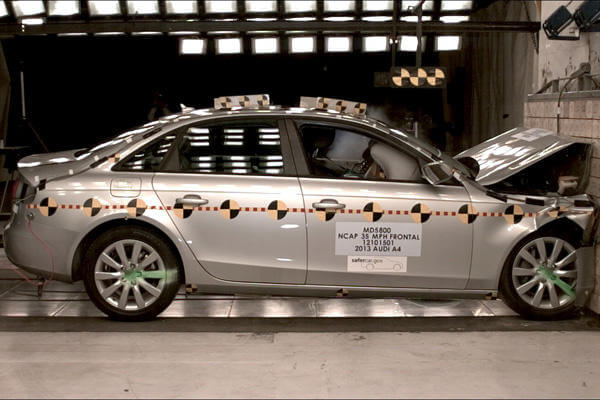This content is provided courtesy of USAA.
If you haven't set foot in a showroom in several years, you may be surprised to learn that, like phones, cars are becoming smarter. A lot smarter. So smart, in fact, they can almost drive themselves.
Well, not quite yet.
Still, as automakers develop ways to transfer the burden of the most difficult and dangerous parts of driving from the driver to the vehicle, the goal is twofold: to reduce congestion, certainly, but mainly to help prevent fatalities.
The flip side is that technology can also be a distraction. So, the question is: How can technology be used in a way that promotes safer driving?
What's on the Horizon
New and coming gee-whiz advances run the gamut from in-car cameras and steering-wheel-based heart-rate monitors that can judge when a driver is drowsy, to voice-activated technology for managing entertainment.
Soon there will be heads-up displays that project dashboard information and approaching hazards in front of the driver's eyes.
And in the public testing phase at the University of Michigan Transportation Research Institute are so-called connected vehicles, equipped with technology that shares road conditions with other cars and roadside transmitters.
"In 15 years, all cars are going to be 'connected' to each other and to the infrastructure," says Scott McCormick, president of the nonprofit Connected Vehicle Trade Association business league.
What's Available Today
Today, the most widespread and useful new vehicle safety features use data taken from external radar and camera sensors to warn drivers of dangers and, increasingly, do something about it.
Adaptive cruise control. With this feature, a driver sets her speed, much as with traditional cruise control. As she's driving, the adaptive cruise control is designed to "adapt" by slowing the car down as it approaches a slower vehicle.
Forward collision warning. This sets off audible and visual warnings if the car is approaching another vehicle too fast. If the situation demands it, cars with this feature are designed to stop automatically.
Lane-keeping. Using a rearview-mirror-mounted camera, this technology helps verify the car is not drifting out of its lane. In some Ford vehicles now equipped with this feature, a light flashes in the rearview mirror and the steering wheel shakes — much like a rumble strip on the highway — to warn the driver. If the driver doesn't respond, the car reacts.
Blind-spot detection. This feature uses radar in the back corners of the vehicle to help detect hidden cars (drivers are warned with lights in their side mirrors). By combining lane-keeping and adaptive cruise control sensors with blind-spot detection, some carmakers have created an early version of automated driving. Blind-spot detection sensors also can be repurposed in parking lots to help warn drivers of cars, pedestrians and shopping carts as they back out of a space.
Parallel parking assistant. Radar and camera sensors on the corners of the vehicle actually measure a parking space, calculate the necessary maneuvers and then handle the turning.
Traffic jam assistant. Audi's A8 already offers a "stop and go" function that both brakes and accelerates in walking-speed traffic jams. Other car companies — from Ford to Mercedes and BMW — have or are preparing to unveil "traffic jam assistant" technology that takes over driving in low-speed situations.
Safety alert. GM began production on the Cadillac XTS luxury sedan with a patented Safety Seat Alert, which shakes your seat on the right or left to alert you to dangers on that side (or both if the danger is in front or behind).
Is the technology helping improve driver safety?
Automotive safety advances are having measurable effects. The U.S. experienced 32,367 traffic fatalities in 2011, the lowest number in 62 years, according to a report released in December by the National Highway Traffic Safety Administration.
In the report, outgoing Transportation Secretary Ray LaHood cited "significant advances in technology" as a main cause for the decline. And in a 2012 study of insurance data, the Insurance Institute for Highway Safety found that forward-collision avoidance technology and adaptive headlights are preventing crashes and reducing claims, particularly for damage to other vehicles. Drivers seem to be doing their part, too; LaHood suggested driver education was helping.
Of course, there are blips in the general improvement in road safety: Preliminary numbers from the NHTSA show a 7.1% increase in traffic fatalities over the first nine months of 2012.
As with any new technology, automotive safety advances must be approached with the understanding there may be trade-offs. Just as people who use calculators can forget some basic math, drivers who depend on their cars too much may lose important road skills.
While all these technological add-ons are fascinating, it's necessary to remember a person is at the wheel, says Linda Ng Boyle, an associate professor of industrial and systems engineering at the University of Washington. "We can just digest so much information, and we have limited capacities and limited resources to do things."










